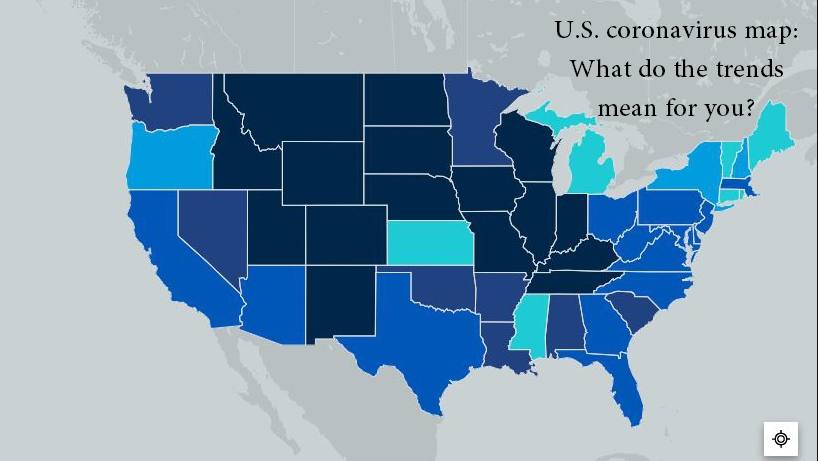
There is a surge of COVID-19 infections happening across the U.S. Midwest, including many of the communities served by Mayo Clinic Health System in Wisconsin, Iowa and Minnesota. Some of those locations have activated hospital emergency surge plans to manage the number of patients hospitalized with COVID-19 infections.
As the COVID-19 pandemic continues, with dire news about upward pandemic trends, it may be tempting to believe inaccurate, questionable claims. Perhaps you've heard theories about COVID-19 on social media, or from friends and family members?
Let's set the record straight about myths.
Myth: Spikes in COVID-19 cases are because of increased testing.
Fact: The rise in infections is not related to increased testing. Of greater concern than the number of tests performed is the increase in the percentage of positive results. This means that the virus is quickly spreading in communities. Learn about the different types of COVID-19 tests.
COVID-19 testing is critical, as it helps people make decisions to self-isolate and guides health care providers' decisions for medical treatment. Widespread testing also allows local health departments to monitor the virus' spread, and make recommendations to schools and businesses.
Myth: We can achieve herd immunity by letting the virus spread through the population.
Fact: Herd immunity occurs when a large portion of a community (the herd) becomes immune to a disease, making the spread of disease from person to person unlikely. As a result, the whole community becomes protected — not just those who are immune. There are some significant problems with relying on community infection to create herd immunity to the virus that causes COVID-19. First, it isn't yet clear if infection with the COVID-19 virus makes a person immune to future infection. If it does not create immunity, herd immunity will not work.
Even if COVID-19 infection creates long-lasting immunity to SARS-CoV-2, the virus that causes COVID-19, a large number of people would have to become infected to reach the herd immunity threshold. Experts estimate that 70% of the population in the U.S. — more than 200 million people — would have to recover from COVID-19 to halt the epidemic. This amount of infection also could lead to serious, and potentially long-term, complications and millions of deaths. If many people become sick with COVID-19 at once, the health care system could quickly become overwhelmed.
Learn more about: Tracking and trending COVID-19

Myth: The number of COVID-19 deaths is much lower, and the disease is overblown.
Fact: This myth stems from a Centers for Disease Control and Prevention (CDC) table that showed the majority of people who died of COVID-19 had multiple causes listed on their death certificate. The myth speculates the majority of these deaths were the result of another pre-existing condition, such as heart or lung conditions, weakened immune systems, severe obesity or diabetes.
The problem with this reasoning is the vast majority of these people could have lived much longer if they had not contracted COVID-19. The CDC explained, "For deaths with conditions or causes in addition to COVID-19, on average, there were 2.6 additional conditions or causes per death." This aligns with what public health officials have said before: The risk of developing dangerous symptoms of COVID-19 may be increased for people who are older and people of any age who have other serious health problems.
Myth: Only the elderly or those with underlying health conditions will get seriously ill and require hospitalization for COVID-19.
Fact: People of all ages can contract COVID-19. The risk of developing dangerous symptoms from COVID-19 may be increased in people who are older or in people of any age who have other serious health problems, such as heart or lung conditions, weakened immune systems, severe obesity or diabetes.
People of all ages are being hospitalized with COVID-19. The average age of patients hospitalized because of COVID-19 at Mayo Clinic Health System fluctuates day-to-day.
Myth: The quality of COVID-19 data cannot be trusted.
Fact: Early in the pandemic, information about COVID-19 was changing often as physicians and scientists learned about the new virus. This may have led some people to be concerned with the reliability of the data and information. In addition, partisan approaches and messaging led to further skepticism.
However, we do know hospitals across the upper Midwest are seeing a dramatic increase in the number of patients needing to be hospitalized for COVID-19. Over the past few weeks, the number of patients with COVID-19 in Mayo Clinic Health System hospitals has significantly increased. This situation has the potential to overwhelm hospital resources, and impact the availability to provide preventive and emergent care in our communities.
Related article: More COVID-19 myths to debunk
This article was written by staff at the Mayo Clinic Health System.
Watch: Mayo Clinic Health System leaders urge communities to take COVID-19 pandemic and protocols seriously.
For more information and all your COVID-19 coverage, go to the Mayo Clinic News Network and mayoclinic.org.







